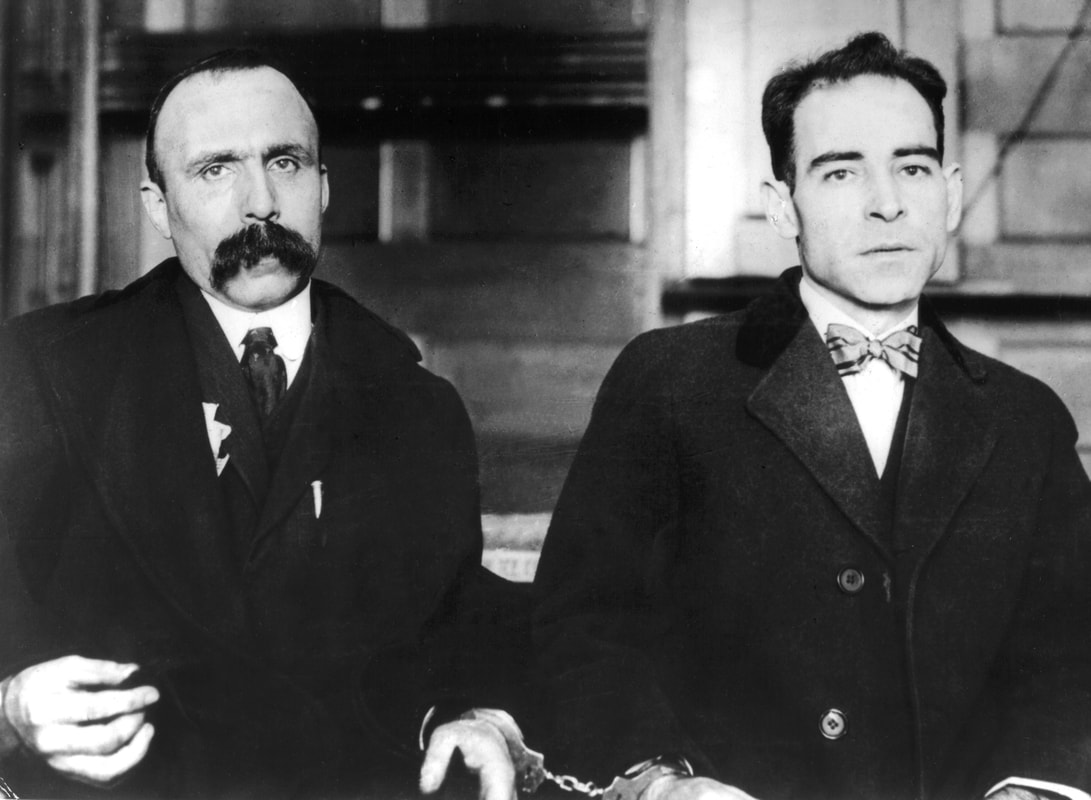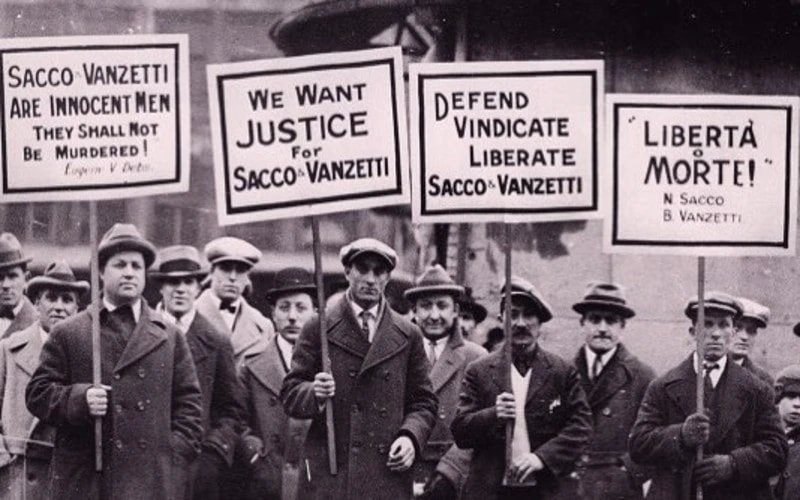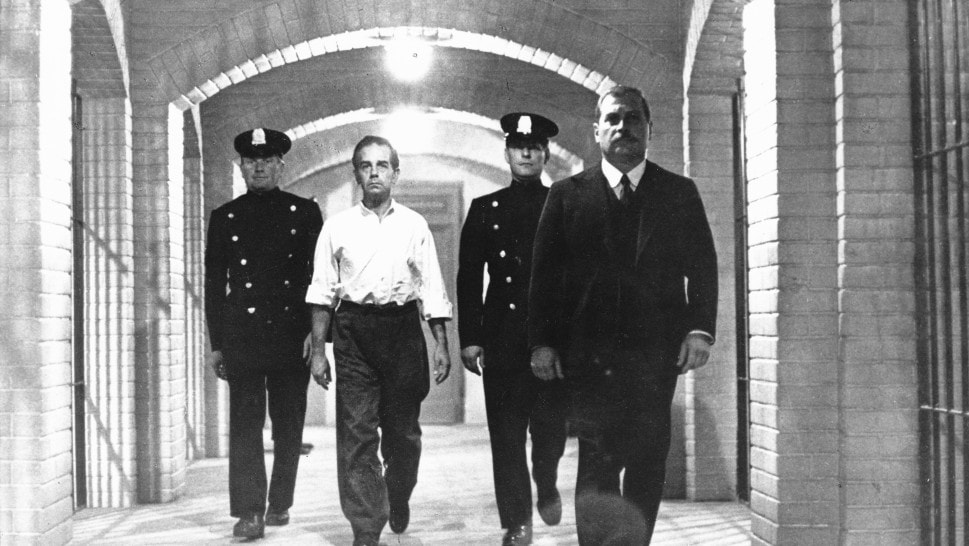|
My old, old friend Jim Lay gave me this suggestion for a person I needed to KNOW. What I loved about it is that it’s not one person, but two. They come as a pair. Or at least that’s how they died. And because they are dead, I will never know the answer to the questions that I like to ask people when I meet them. I have found them to be good ice breakers to get the conversation going. Since they are my own made up questions (with the help of my friend Darlene), historical records will not show if these two people prefer creamy over crunchy peanut butter. And I will never know if they consider soup as a meal. I suspect, if they could live in another era, their answers would probably be something like, “I’d just be happy to be alive.” And as long as I am putting words in their mouths, it’s probably safe to say the one place they have visited that either one would never go back to would have to be the electric chair. Because that’s how people will remember them (after they leave a party...if they we alive and had the chance to do so.) What I have briefly learned about Nicola Sacco and Bartolomeo Vanzetti is this. They were both from Italy. They both were self-professed anarchists. And they were both accused of murdering two others during an armed robbery. Many have claimed it was the first two things that got the pair accused of the third thing, which lead to the two of them being executed, despite declaring their innocence throughout their controversial trial. This is their story. On April 15, 1920, two armed men killed two employees at the Slater-Morrill Shoe Company factory in Braintree, Massachusetts. The killers were robbing the company’s payroll delivery. One of the victims was a security guard named Alessandro Berardelli. He was shot four times as he was said to be reaching for his service revolver (which was never recovered from the scene) at the time of his death. The other man, Frederick Parmenter, was the paymaster who was shot once in the chest and then a second time in the back as he attempted to flee. The robbers got away with more than $15,000 As witnesses nearby would testify, two men were seen jumping into a dark blue Buick (police identified as stolen). Inside the car were several other men who fired wildly at other company workers nearby. Not one person identified either Sacco or Vanzetti as the shooters or robbers. That lack of witness or evidence didn’t seem to bother the police. They were hungry to close an investigation from a similar type of robbery at another shoe factory that occurred four months earlier on Christmas Eve, in Bridgewater, Massachusetts. Witnesses in that crime identified the suspects as Italians. Police speculated that Italian anarchists perpetrated the robberies to finance their activities. And that’s where Sacco and Vanzetti come in. “After going to a garage to claim a car that police said was connected with the crime, Sacco and Vanzetti were arrested and charged with the crime. Although both men carried guns and made false statements upon their arrest, neither had a previous criminal record.” There’s a lot about this story and their conviction that remains unresolved. But since they were tried, convicted and then electrocuted for the crime, Sacco and Vanzetti cannot answer my silly questions (or answer any follow up questions the police might have had). What historical records tell me (so I don’t have to make it up), is I know what they like to do with their hands. Sacco was a shoemaker and a night watchman, who migrated to the United States at the age of seventeen. Vanzetti was a fishmonger. It is also public knowledge that they both left Italy for the US in 1908. However they did not meet until 1917. It was reported that “Both men were believed to be followers of Luigi Galleani, an Italian anarchist who advocated revolutionary violence, including bombing and assassination.” The Constitutional Rights Foundation provides this reminder of what was going on in our country back then that could have led to the arrest of Sacco and Vanzetti. “World War I created tremendous political turmoil. Many leftist groups in Europe and in America opposed the war. They saw it as an imperialist struggle for power and profit, fought at the expense of the working class.” In other words, Sacco and Vanzetti were not highly regarded in society or by the authorities because they supported Galleani’s reviled anarchist vision. When America entered the war in April 1917, President Woodrow Wilson said in his Flag Day address, "Woe to the man or group of men that seeks to stand in our way in this day of high resolution." And the very next day, he signed the Espionage Act, “which set a fine of $10,000 and a prison term of up to 20 years for anyone who aided the enemy or encouraged disloyalty in the armed forces.” This would set Congress in motion to amend and pass the Sedition Act, which imposed the same penalties on anyone who uttered, printed, wrote, or published "disloyal, profane, scurrilous or abusive language" against the government or the Constitution.” (ME: I guess that meant something more back then than it does today.) It should be of no surprise to anyone that the press quickly jumped on board and began to whip up the “Red Scar.” Talking heads and opinion makers stoked the fires of fear among the citizens who were told to report anyone they suspected of sedition. As one paper in Quincy, Massachusetts wrote, "Organized efforts are being started to fight the Bolshevik poison. It is none too soon." Needless to say, it was a bad time for foreigners and anarchists. And a really hostile time if you were both.
To this day, many people believe that these two men wrongfully executed. As some have argued, “their death was a result of anti-immigrant and anti-anarchist bias that heavily influenced the verdict.” A series of appeals followed. They were based on recanted testimony, conflicting ballistics evidence, a prejudicial pretrial statement by the jury foreman, and the confession to the robbery and murder by Celestino Madeiros, who said he pulled off the job with the Joe Morelli gang. But the state Supreme Court refused to overturn the verdict. By 1926, the case had drawn worldwide attention. As details of the trial and the men's suspected innocence became known, Sacco and Vanzetti became the center of one of the largest causes célèbres in modern history up until the last couple of years. In 1927, protests on their behalf were held in every major city in North America and around the world. Many celebrated writers and academics, like Harvard law professor and future Supreme Court justice Felix Frankfurter, argued their innocence and plead for a pardon. But the government wasn’t going to budge. Massachusetts Governor Alvan T. Fuller denied the men clemency. On August 23, 1927, the last place these two men would walk, would be down the dark corridors of the Charlestown State Prison where they would be executed in the electric chair at just a little after midnight.
0 Comments
Leave a Reply. |
Ian MacdonaldAn ex-copywriter turned punk rock pastor and peacemaker who dedicates his life to making the world a better place for all humanity. "that they all might be one" ~John 17:21“Prius vita quam doctrina.”
~ St. Thomas Aquinas (1225–1274) * “Life is more important than doctrine.”
Archives
June 2024
|


